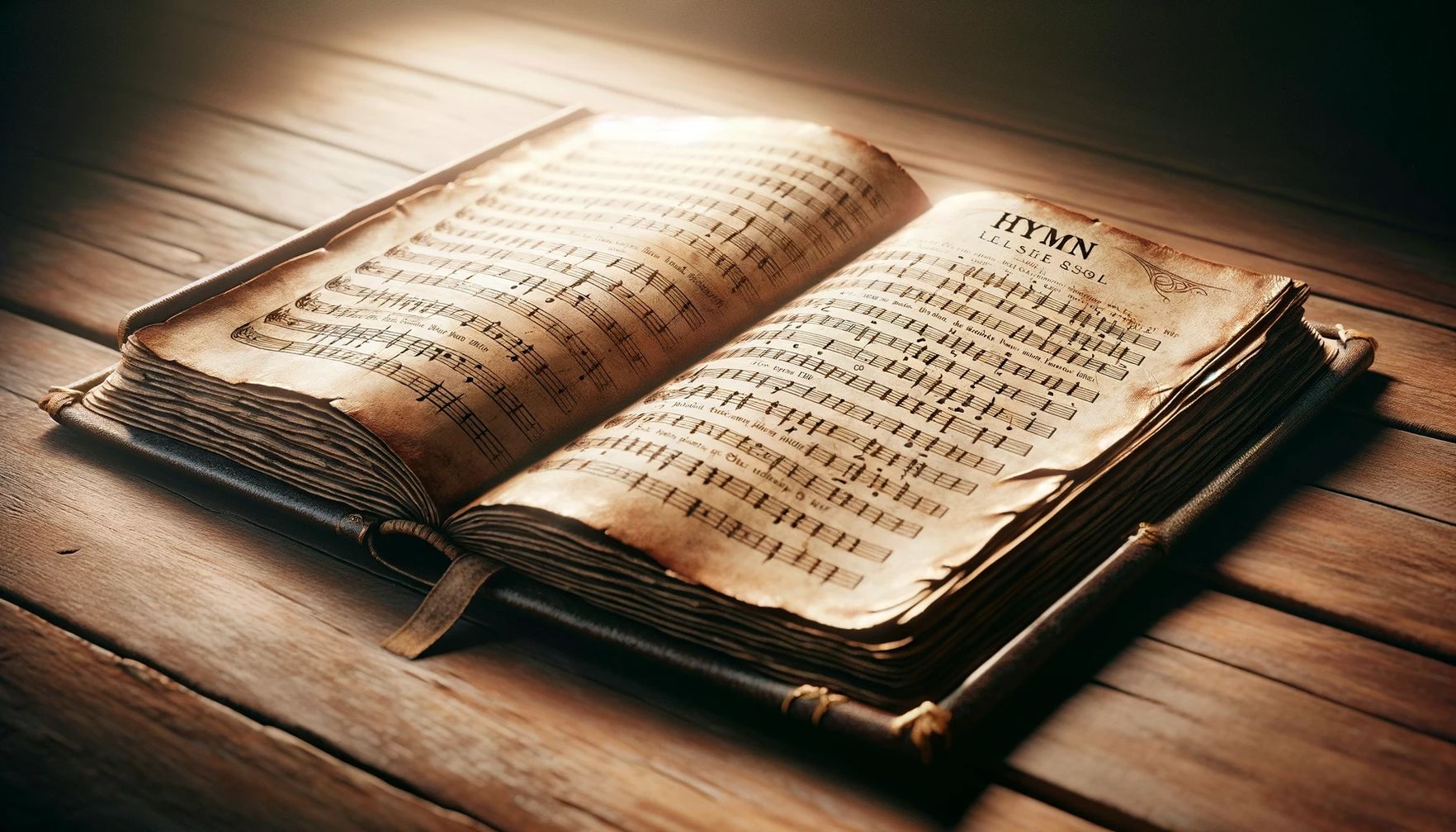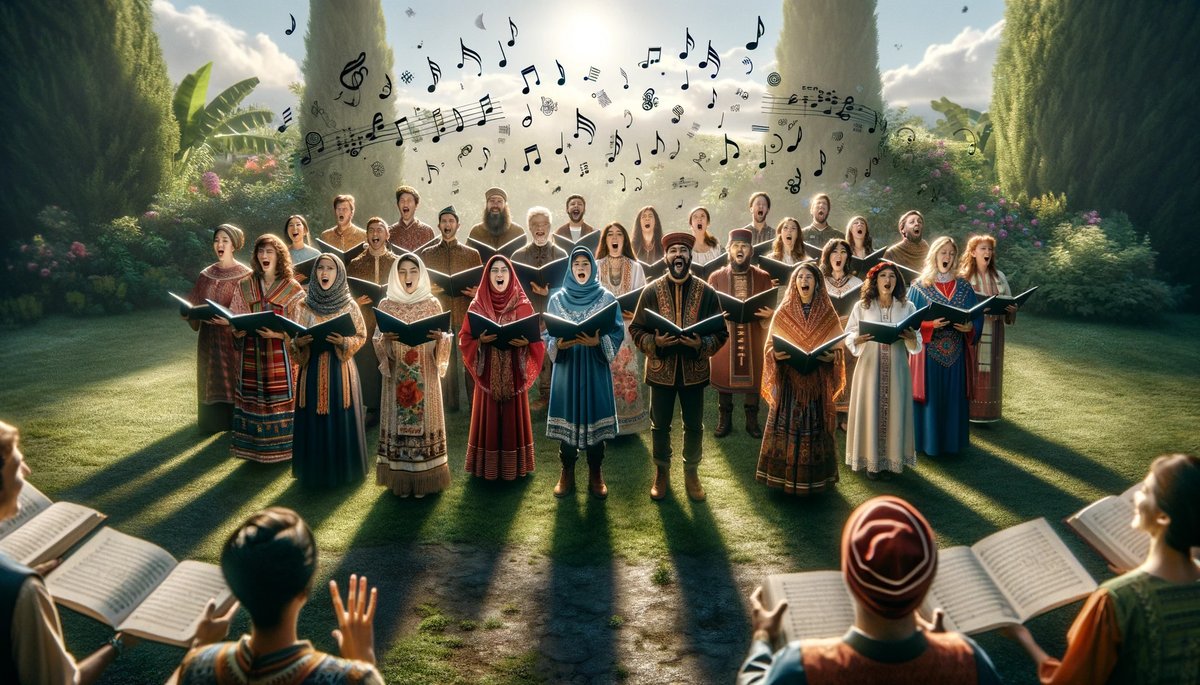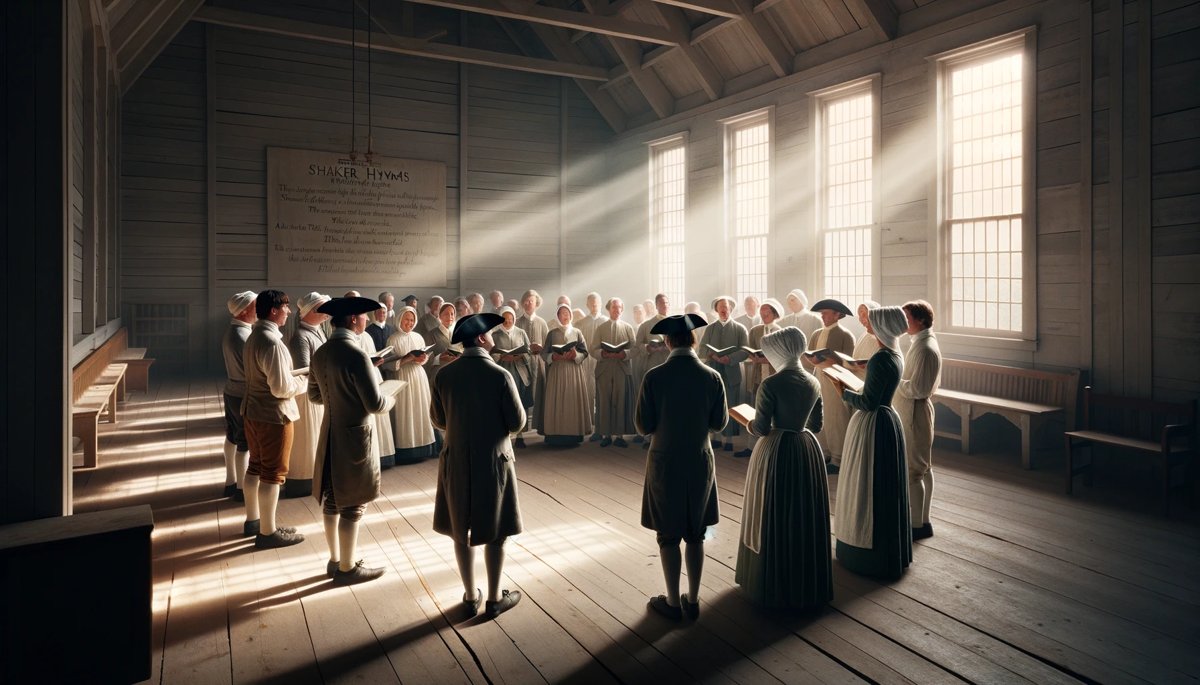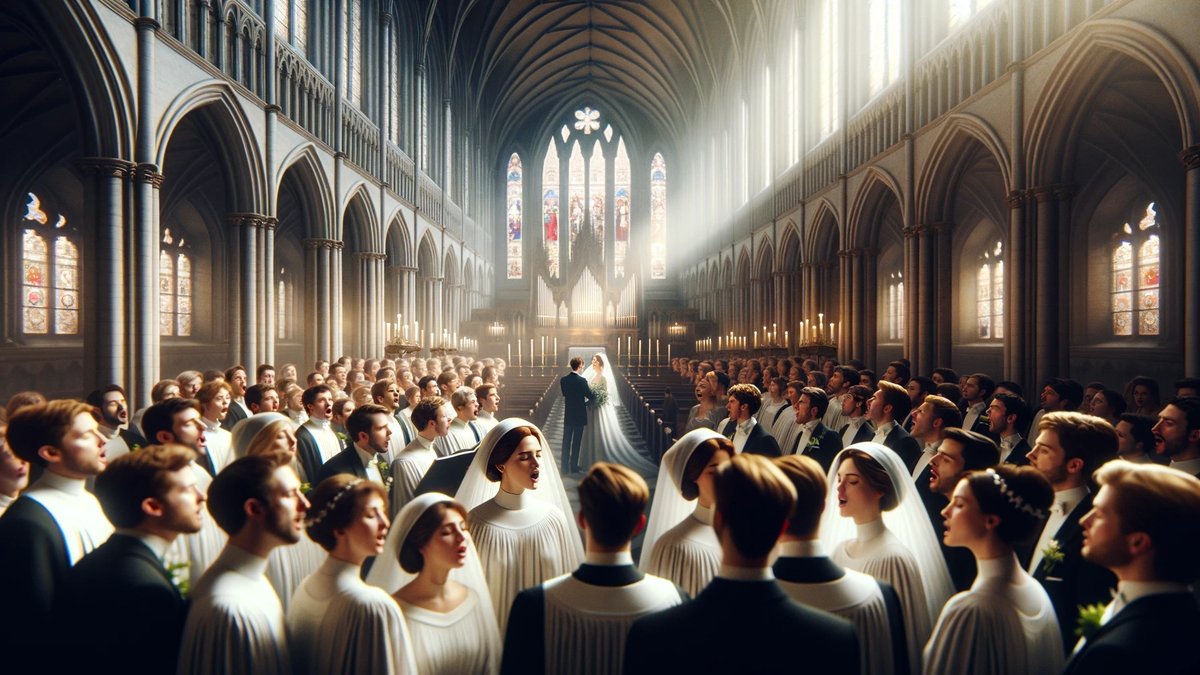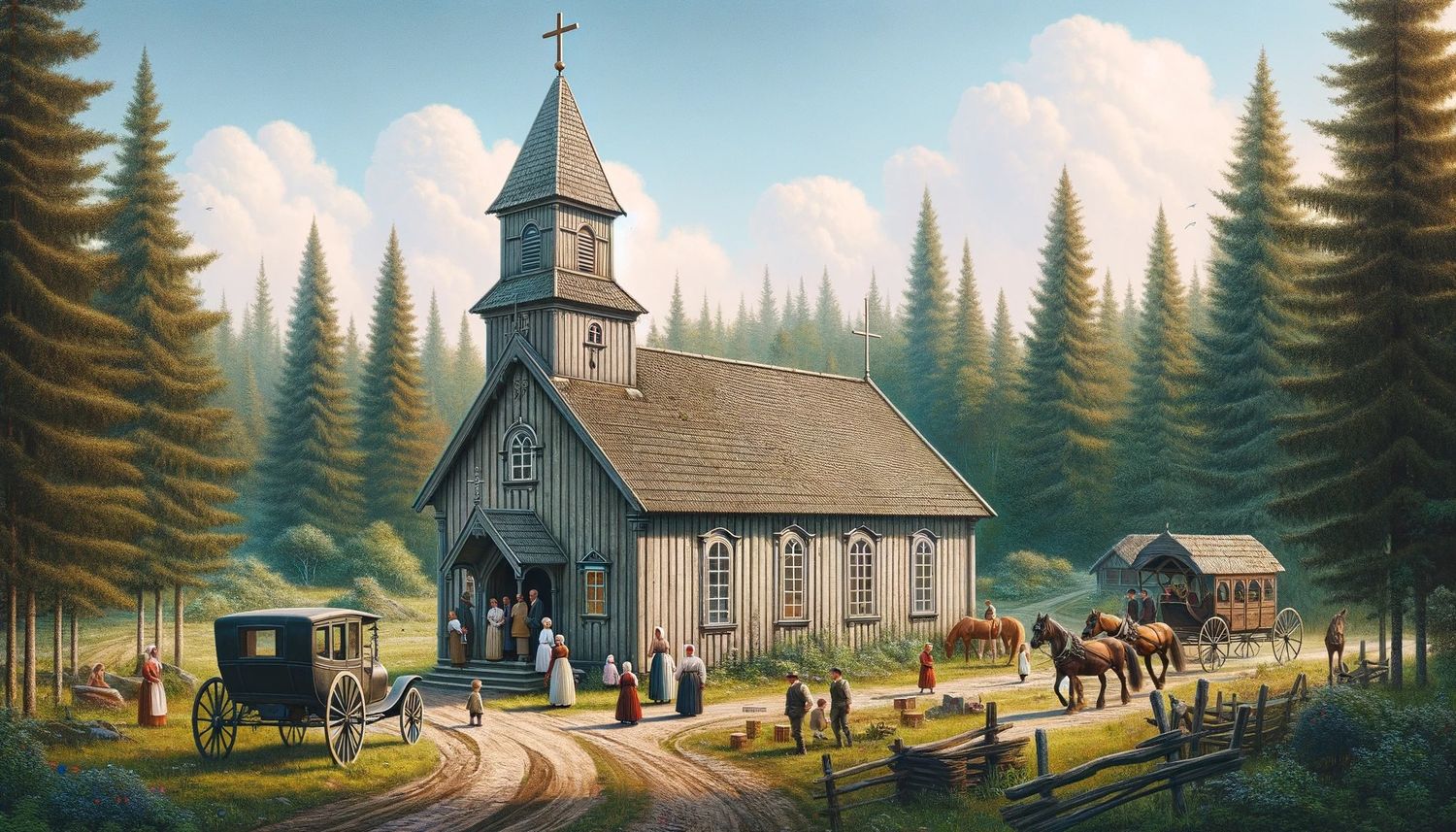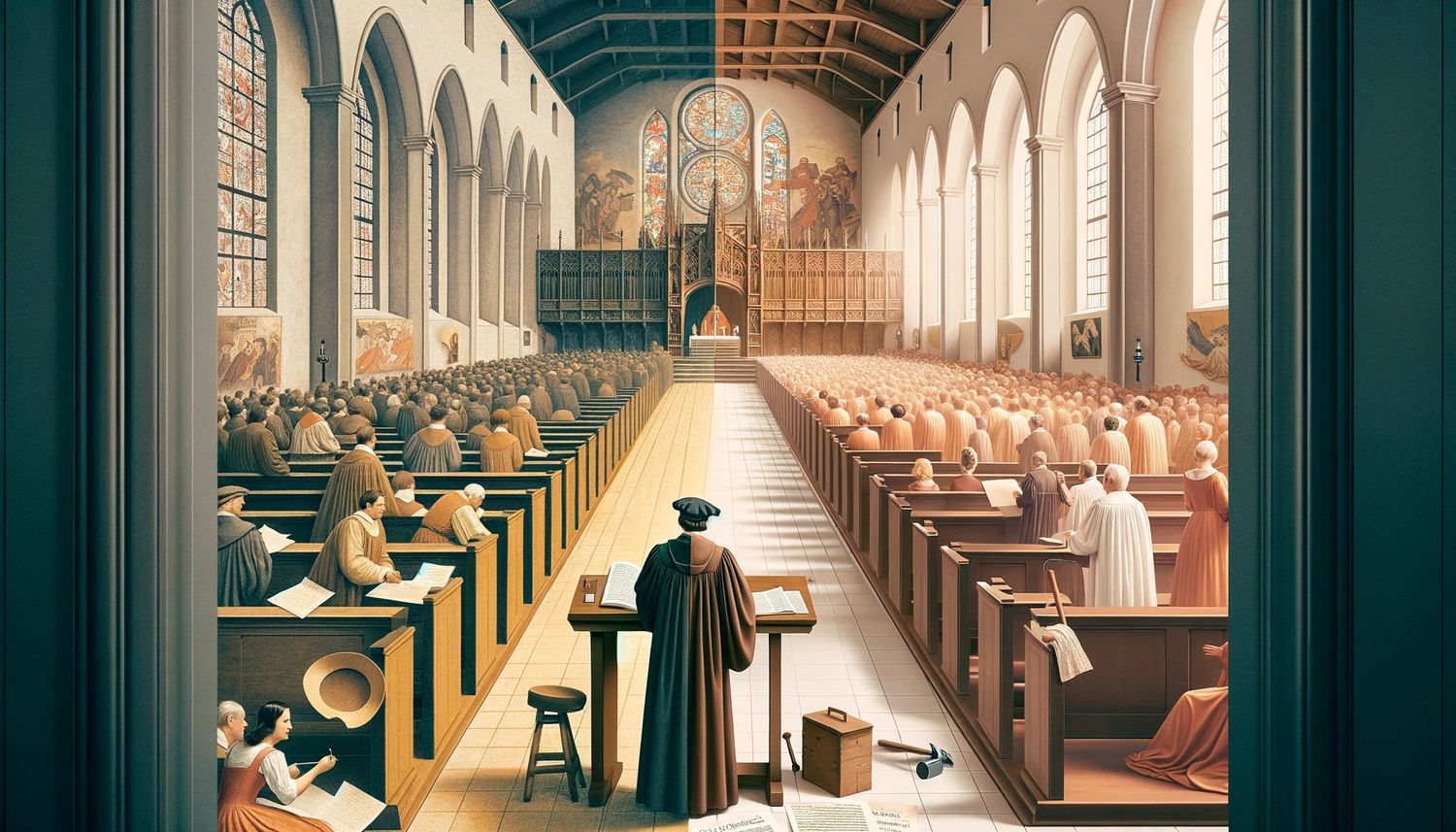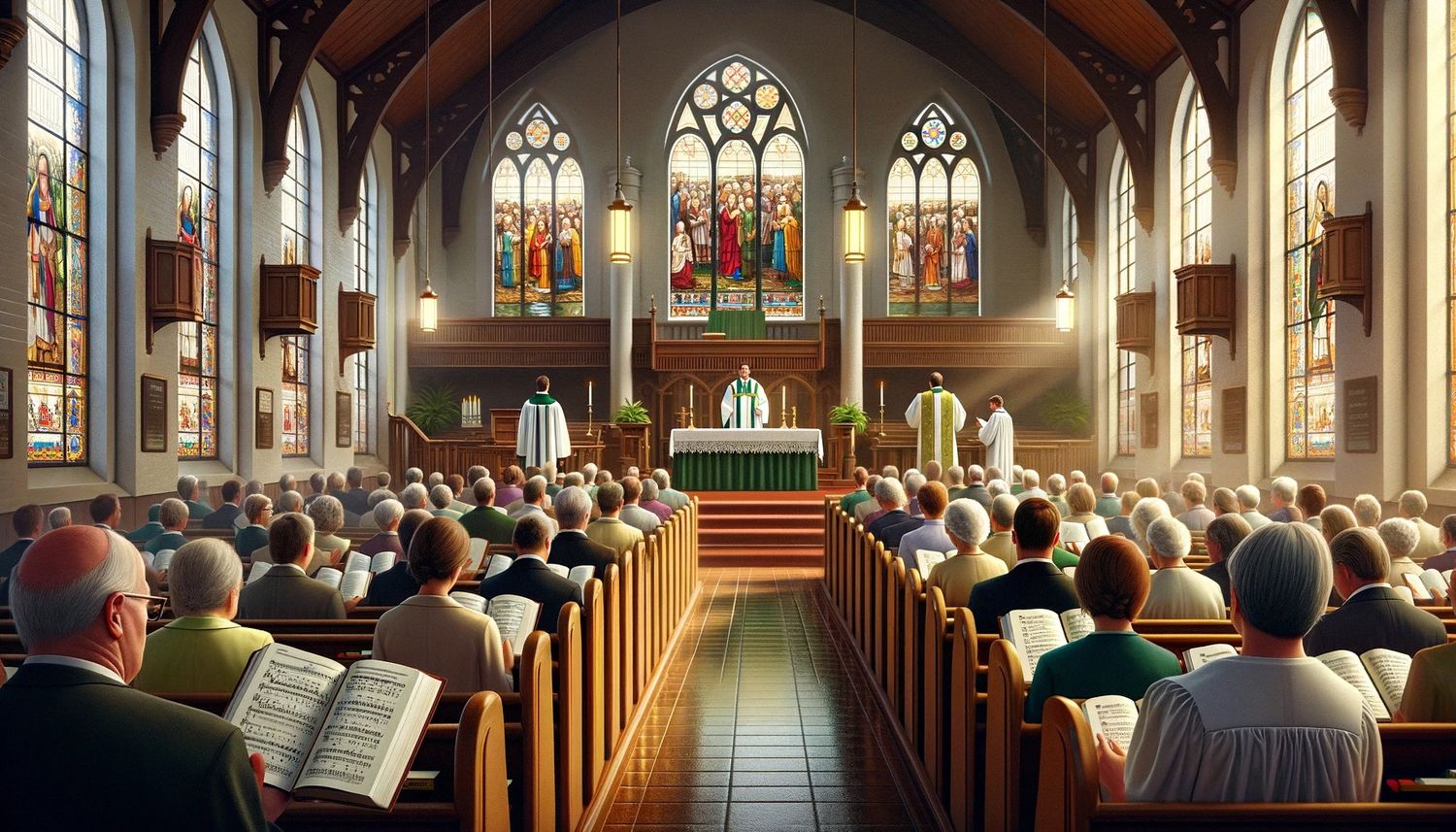Home>Theology and Spirituality>What Is A Lutheran Hymn


Theology and Spirituality
What Is A Lutheran Hymn
Published: March 3, 2024
Peter Smith, Editorial Director at Christian.net, combines deep insights into faith, politics, and culture to lead content creation that resonates widely. Awarded for his contributions to religious discourse, he previously headed a major organization for religious communicators, enhancing dialogue on faith's societal impacts.
Discover the significance of Lutheran hymns in theology and spirituality. Learn about their history, themes, and impact on worship and faith. Explore the rich tradition of Lutheran hymnody.
(Many of the links in this article redirect to a specific reviewed product. Your purchase of these products through affiliate links helps to generate commission for Christian.net, at no extra cost. Learn more)
Table of Contents
The History of Lutheran Hymns
The history of Lutheran hymns dates back to the Protestant Reformation in the 16th century. Martin Luther, the influential German theologian and key figure in the Reformation, played a pivotal role in the development of Lutheran hymnody. Luther recognized the power of music in worship and sought to engage congregants in the act of singing hymns in their native language, rather than solely relying on Latin chants performed by the clergy. This shift in language allowed for greater participation and understanding among the laity, contributing to the spread of Lutheran teachings through hymnody.
-
Martin Luther's Contribution: Martin Luther's influence on Lutheran hymnody is profound. He composed numerous hymns, including the famous "A Mighty Fortress Is Our God," which remains a cornerstone of Lutheran hymnody. Luther's hymns were characterized by their theological depth, simplicity, and congregational accessibility, reflecting his commitment to making the Word of God accessible to all.
-
Expansion and Development: Following Luther's lead, other theologians and musicians contributed to the rich tapestry of Lutheran hymnody. Notable figures such as Johann Sebastian Bach and Paul Gerhardt made significant contributions to the development of Lutheran hymns, infusing them with musical and theological richness. The hymnals compiled during this period served as a means of teaching and reinforcing Lutheran doctrine, while also providing a source of comfort and inspiration for congregants.
-
Hymnals and Liturgical Use: Over time, Lutheran hymnals were compiled and published, containing a wealth of hymns that reflected the doctrinal emphases of the Lutheran tradition. These hymnals became integral to Lutheran worship, with hymn-singing occupying a central place in liturgical practices. The hymns served as a means of expressing faith, proclaiming the Gospel, and fostering a sense of unity among believers.
-
Continued Influence: The legacy of Lutheran hymnody extends beyond the Reformation era, as Lutheran hymns continue to be cherished and sung in congregations worldwide. The enduring nature of these hymns speaks to their enduring theological and musical significance, as well as their ability to connect successive generations to the rich heritage of the Lutheran faith.
In summary, the history of Lutheran hymns is a testament to the enduring power of music in conveying and reinforcing theological truths. From the contributions of Martin Luther to the ongoing legacy of Lutheran hymnody, these hymns continue to enrich the worship and spiritual lives of believers, serving as a means of expressing and transmitting the core tenets of the Lutheran faith.
Read more: What Are Advent Hymns
The Theology Behind Lutheran Hymns
Lutheran hymns are deeply rooted in the theological convictions of the Lutheran tradition, reflecting key doctrinal emphases and serving as vehicles for conveying and reinforcing theological truths. The theology behind Lutheran hymns encompasses several fundamental principles that shape their content and purpose within the context of worship and Christian life.
-
Sola Scriptura: Central to Lutheran theology is the principle of Sola Scriptura, which emphasizes the authority of Scripture as the sole source of divine revelation and the ultimate standard for faith and practice. Lutheran hymns are imbued with scriptural references and themes, drawing directly from the rich tapestry of biblical narratives, teachings, and promises. Through the use of scriptural language and imagery, these hymns serve to instill and reinforce the foundational truths of the Christian faith, grounding believers in the Word of God.
-
Justification by Faith: Another key theological emphasis in Lutheran hymnody is the doctrine of justification by faith. Lutheran hymns often articulate the profound significance of God's grace and the redemptive work of Christ, emphasizing the believer's reliance on faith rather than personal merit for salvation. Themes of grace, mercy, and the assurance of salvation permeate these hymns, offering comfort and hope to congregants as they reflect on the unmerited favor of God.
-
Theology of the Cross: Lutheran hymns frequently reflect the theology of the cross, highlighting the paradoxical nature of God's power and wisdom manifested in the weakness and suffering of Christ. Through poignant lyrics and evocative melodies, these hymns convey the profound mystery of Christ's sacrificial love and the transformative impact of the cross on the lives of believers. They invite worshippers to contemplate the depth of God's love and the profound implications of Christ's atoning work on their behalf.
-
Trinitarian Theology: Lutheran hymnody often engages with the rich theological framework of Trinitarian doctrine, celebrating the triune nature of God—Father, Son, and Holy Spirit. Hymns dedicated to each person of the Trinity express adoration, praise, and gratitude, inviting congregants to participate in the worship of the triune God. Through these hymns, believers are encouraged to deepen their understanding of the divine mystery and to enter into communion with the Godhead in worship and devotion.
-
Ecclesiology and Communion of Saints: Lutheran hymns also reflect the communal nature of the Christian faith, affirming the unity of believers in the body of Christ and the communion of saints across time and space. These hymns express the shared confession of faith, the bond of fellowship, and the hope of eternal life, fostering a sense of belonging and solidarity within the faith community. They serve as a means of edification and encouragement, uniting worshippers in the common confession of the Christian faith.
In essence, the theology behind Lutheran hymns is intricately woven into the fabric of Lutheran identity, expressing the core tenets of the faith and nurturing the spiritual life of believers. Through their theological depth, scriptural fidelity, and emotive resonance, these hymns continue to serve as a vital means of proclaiming and internalizing the enduring truths of the Lutheran tradition.
The Structure and Characteristics of Lutheran Hymns
Lutheran hymns exhibit distinctive structural and characteristic features that distinguish them within the broader landscape of Christian hymnody. These elements contribute to the theological depth, congregational accessibility, and emotive resonance that are hallmarks of Lutheran hymnody.
-
Metrical and Strophic Form: Lutheran hymns often adhere to a metrical and strophic structure, employing regular meter and a consistent stanzaic pattern. This form facilitates congregational singing by providing a predictable and easily memorizable framework for the music and lyrics. The repetitive nature of stanzas allows for the seamless integration of text and melody, enabling congregants to engage with the hymn's content while participating in communal worship.
-
Doctrinal Content: Lutheran hymns are characterized by their robust doctrinal content, encompassing themes such as justification, sanctification, the sacraments, the Word of God, and eschatological hope. These hymns serve as vehicles for catechesis, conveying essential theological teachings in a format that is accessible and memorable. Through the repetition of doctrinal themes across multiple stanzas, Lutheran hymns reinforce key aspects of Lutheran theology and nurture the faith of worshippers.
-
Scriptural Allusions and References: A prominent feature of Lutheran hymnody is the incorporation of scriptural allusions and direct references to biblical passages. The use of scriptural language and imagery serves to root the hymns in the Word of God, drawing upon the rich tapestry of biblical narratives, psalms, and teachings. By weaving scriptural references into the fabric of the hymns, Lutheran composers and lyricists underscore the foundational authority of Scripture and invite congregants to meditate on the biblical truths encapsulated in the hymnody.
-
Musical Melodies and Harmonies: Lutheran hymns are often set to melodies that are characterized by their singability, melodic beauty, and harmonic richness. These melodies are crafted to complement the textual content of the hymns, enhancing the emotive impact and theological expression of the lyrics. The interplay between text and music in Lutheran hymnody creates a cohesive and immersive worship experience, inviting congregants to engage both intellectually and emotionally with the hymnal repertoire.
-
Liturgical Functionality: Lutheran hymns are designed to fulfill specific liturgical functions within the context of worship. They are organized according to the church year, aligning with the seasons and themes of the liturgical calendar. This intentional structuring allows Lutheran congregations to journey through the narrative of salvation history, from Advent to Pentecost, while engaging with hymns that correspond to the ecclesiastical seasons and festivals. The liturgical functionality of Lutheran hymnody underscores its role in shaping and enriching the worship experience of the faith community.
In essence, the structure and characteristics of Lutheran hymns reflect a harmonious blend of theological depth, congregational accessibility, and liturgical functionality. Through their metrical form, doctrinal content, scriptural grounding, musical expression, and liturgical integration, Lutheran hymns continue to serve as a vital medium for the proclamation and embodiment of Lutheran faith and worship.
The Role of Lutheran Hymns in Worship
Lutheran hymns play a multifaceted and integral role in the worship life of Lutheran congregations, serving as a means of expressing, reinforcing, and enacting the core tenets of the Lutheran faith within the context of communal worship. The significance of Lutheran hymnody extends beyond mere musical accompaniment, encompassing theological, liturgical, and communal dimensions that contribute to the richness and depth of the worship experience.
-
Proclamation of the Word: Lutheran hymns function as vehicles for the proclamation of the Word of God within the worship setting. Through their scriptural content, doctrinal fidelity, and theological depth, these hymns convey and reinforce the foundational truths of the Christian faith, allowing congregants to engage with the Word through music and song. The hymns serve as a medium for the articulation of biblical narratives, theological themes, and devotional expressions, enabling worshippers to internalize and respond to the Word in a musical and communal context.
-
Catechetical Tool: Lutheran hymnody serves as a catechetical tool, imparting essential theological teachings and shaping the faith formation of worshippers. The doctrinal content of Lutheran hymns provides a framework for instructing believers in the core doctrines of the Lutheran tradition, fostering a deepened understanding of the faith and its implications for Christian living. Through the repetition and recitation of doctrinal themes in hymnody, congregants are nurtured in their knowledge of the faith and equipped for a life of discipleship.
-
Expression of Corporate Worship: Lutheran hymns facilitate the expression of corporate worship, uniting congregants in the act of communal singing and praise. The congregational nature of Lutheran hymnody fosters a sense of unity, participation, and shared confession among worshippers, as they join their voices in the singing of hymns that articulate their common faith and devotion. This collective expression of worship serves to edify, encourage, and unify the faith community, creating a space for shared spiritual experiences and expressions of faith.
-
Liturgy and Sacramental Life: Lutheran hymns are integrated into the liturgical and sacramental life of the church, aligning with the rhythms and themes of the church year and the order of worship. These hymns correspond to specific liturgical seasons, festivals, and sacramental rites, enriching the worship experience by providing a musical and lyrical framework for engaging with the liturgical actions and themes. Lutheran hymnody thus enhances the sacramental and liturgical dimensions of worship, underscoring the interconnectedness of music, word, and sacrament in the Lutheran tradition.
-
Spiritual Formation and Devotion: Lutheran hymns contribute to the spiritual formation and devotion of worshippers, offering a means of personal and communal expression of faith, lament, praise, and supplication. The emotive and contemplative nature of Lutheran hymnody invites worshippers to engage with the hymns on a deeply personal level, fostering spiritual introspection, consolation, and inspiration. Through the singing of hymns, congregants are invited to enter into moments of prayer, meditation, and spiritual encounter, nurturing their inner lives and fostering a deeper connection to God.
In essence, the role of Lutheran hymns in worship encompasses their function as vehicles for the proclamation of the Word, catechetical tools, expressions of corporate worship, integral components of liturgy and sacramental life, and catalysts for spiritual formation and devotion. Through their multifaceted role, Lutheran hymns continue to enrich and enliven the worship experience, serving as a vital medium for the embodiment and expression of Lutheran faith within the context of communal worship.
Notable Lutheran Hymn Writers and Composers
Notable Lutheran hymn writers and composers have made enduring contributions to the rich tapestry of Lutheran hymnody, shaping the musical and theological landscape of the tradition. Their works continue to resonate within Lutheran congregations and beyond, serving as a source of inspiration, edification, and theological reflection.
-
Martin Luther: As the father of the Reformation, Martin Luther holds a central place in the development of Lutheran hymnody. Luther's hymnody, characterized by its theological depth and congregational accessibility, includes timeless compositions such as "A Mighty Fortress Is Our God" and "From Heaven Above to Earth I Come." These hymns reflect Luther's commitment to engaging congregants in the act of singing and teaching foundational Christian truths through music.
-
Johann Sebastian Bach: Renowned for his musical genius, Johann Sebastian Bach made significant contributions to Lutheran hymnody through his compositions. Bach's masterful harmonizations of Lutheran chorales, such as "Jesu, Joy of Man's Desiring" and "O Sacred Head, Now Wounded," exemplify his ability to infuse Lutheran hymnody with intricate musical textures and profound theological expression.
-
Paul Gerhardt: A prominent Lutheran hymn writer of the 17th century, Paul Gerhardt's hymns are cherished for their emotive depth and pastoral sensitivity. Hymns like "O Sacred Head, Now Wounded" and "All My Heart Again Rejoices" continue to resonate with worshippers, offering solace, hope, and profound reflections on the Christian faith.
-
Catherine Winkworth: A 19th-century translator and adapter of German hymns, Catherine Winkworth played a pivotal role in introducing German hymnody to English-speaking audiences. Her translations of hymns such as "Now Thank We All Our God" and "Praise to the Lord, the Almighty" facilitated the cross-cultural dissemination of Lutheran hymnody, enriching the hymn repertoires of English-speaking congregations.
-
Philip Nicolai: Known for his composition of the hymn "Wachet auf, ruft uns die Stimme" (Wake, Awake, for Night Is Flying), Philip Nicolai's hymnody exemplifies the eschatological themes and fervent devotion characteristic of Lutheran hymnody. His hymns continue to inspire worshippers with their vivid imagery and profound expressions of faith and hope.
-
Johann Heermann: A 17th-century Lutheran hymn writer, Johann Heermann's hymns, including "Ah, Holy Jesus, How Hast Thou Offended" and "O Dearest Jesus, What Law Hast Thou Broken," are revered for their poignant reflections on Christ's suffering and the believer's response to God's grace. Heermann's hymnody remains a testament to the enduring impact of Lutheran hymn writers on the devotional life of the church.
-
Michael Praetorius: A prolific composer and music theorist of the late Renaissance and early Baroque periods, Michael Praetorius made significant contributions to Lutheran hymnody through his compositions and arrangements. His settings of Lutheran chorales, such as "Lo, How a Rose E'er Blooming" and "In Dulci Jubilo," exemplify his skill in crafting polyphonic textures that enhance the emotive and theological dimensions of Lutheran hymnody.
In summary, the legacy of notable Lutheran hymn writers and composers endures through their enduring contributions to the musical, theological, and devotional life of the Lutheran tradition. Their hymns continue to resonate with worshippers, offering a profound and enduring expression of Lutheran faith and devotion.
